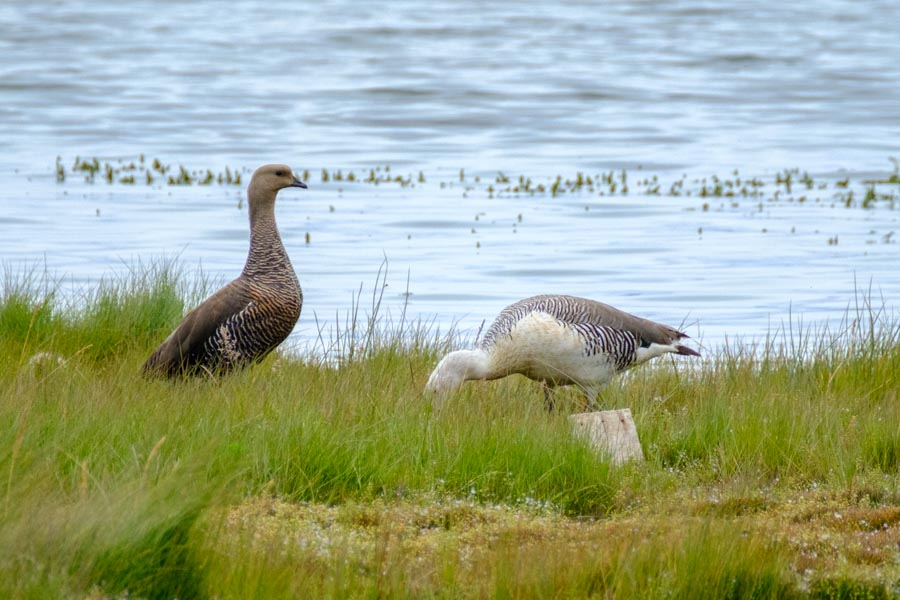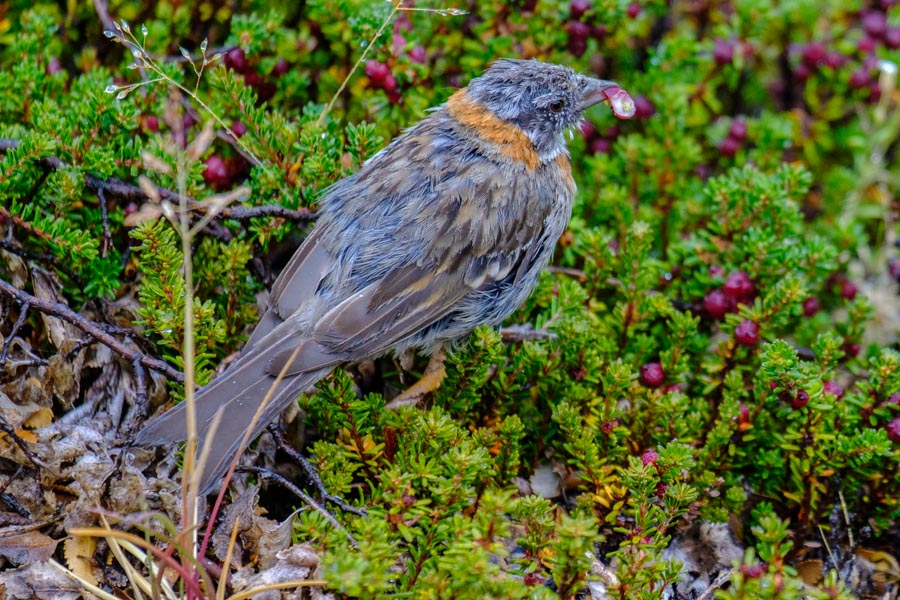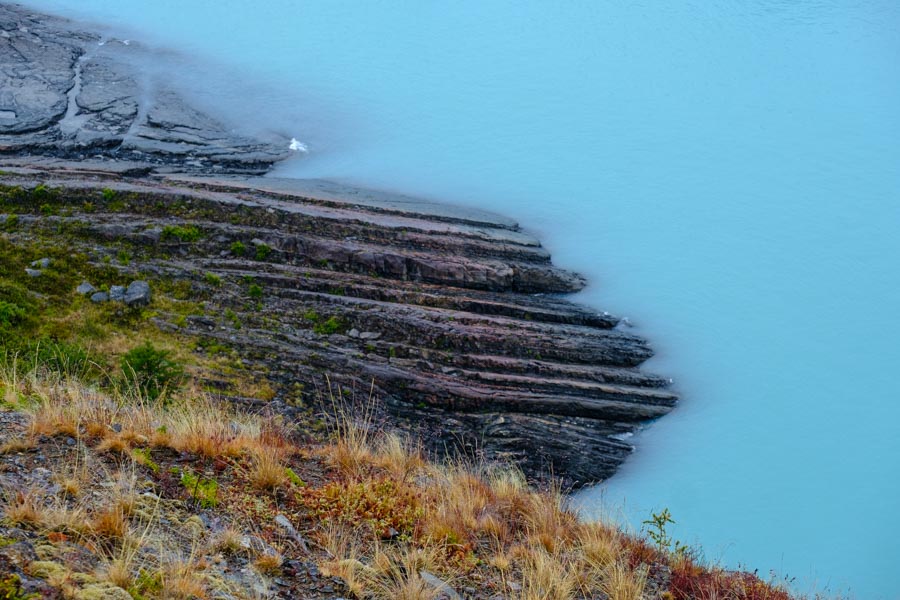Our trip to Glaciers National Park took a couple of hours, driving along the valley that contains Lago Argentino, the largest lake in Argentina and the third largest in South America. It’s fed by numerous glaciers and drains via the Santa Cruz river into the Atlantic Ocean. It represents an important source of fresh water for the Santa Cruz region.
The lake splits into three arms, two of which connect at the base of the Moreno glacier. I should say “sometimes connect,” since periodically the connection is blocked by ice discharged from the glacier. When the connection is blocked one of the branches has no outlet and the water level can rise by 90 feet or more. When, on an approximately four year cycle, the connection is broken, the water level drops back to its normal state.
In 1902 Chile and Argentina reached agreement as to the border between the two countries (the Pope interceded in the negotiations). Argentina then began a campaign to attract mostly Europeans to move to Patagonia. The area next to Lago Argentina was particularly desirable since it received more than average rain and had the lake as a source of fresh water for people and livestock. Settlers from Ireland, Scotland, Croatia and elsewhere built homes and established ranches on the banks of the arm subject to flooding. Things reached a crisis level in 1937 and the local residents talked the government into sending the air force to bomb the obstruction. That and several other equally hair-brained schemes failed but soon enough the passage way opened naturally.
The Moreno glacier, like 330-odd other glaciers, is fed from the ice fields top the nearby 10,000-foot Andes. It’s the same ice field that feeds the glaciers in Torres del Paine where we were yesterday. All but two glaciers fed from this ice field are retreating. Only Moreno and one other are growing. (The other is recovering from a volcanic eruption whose heat melted more than the usual amount.) Moreno’s ice moves forward an average of six feet per day. Overall, Moreno is the size of Buenos Aires and its ice weighs a conservatively estimated one zillion tons.
After 32 tourists were zonked on the head (and died) from calving ice thrown off by Moreno over a 20-year period, the government reacted. They built a series of steel-grid walkways that lead down to excellent, but safe, vantage points. The only knock on this system is that the walkways are slippery when wet. And today was a misty, rainy day and so we had to watch our step. This was the first really rainy day of our trip; we’ve been very fortunate!
Tonight seven of us are helping Sharon with her packing problems by meeting in our room for a glass of her wine from Chile; anything for a cousin. Then we’ll go out for a “dinner on your own” at a restaurant that serves lamb cooked on a spit.
Tomorrow we fly back to Buenos Aires for our farewell dinner. Eleven of us are arranging, with Luis’s help, to go to a tango show. I hope Judy and I are able to resist the urge to jump up on the stage and join the dancing, using the steps we learned in our four-week tango class back in Sun City Center.





































